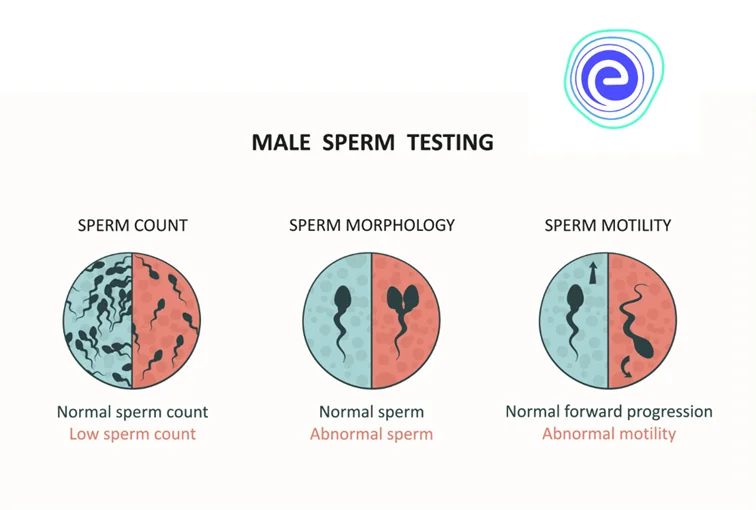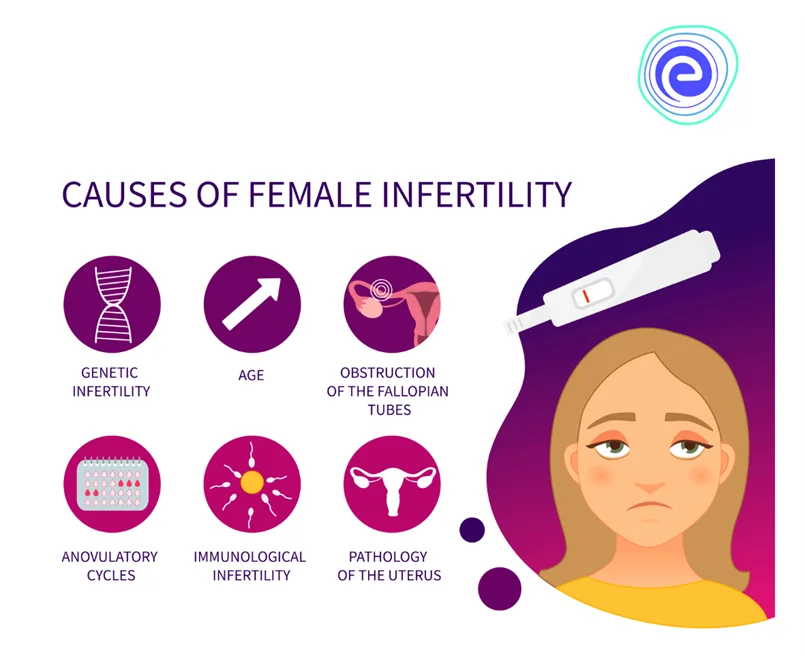- Written By
Shilpi Shikha
- Last Modified 02-02-2025
Infertility and Assisted Reproductive Technologies – IVF, IFT, FET, ICSI, Surrogacy, FAQs
Infertility and Assisted Reproductive Technologies: Infertility is a serious reproductive issue. Couples who are struggling with infertility issues can opt for procedures to have their biological child. A test tube baby is created in a laboratory through a scientific method that involves the combination of eggs and sperm. Worldwide approximately 5%-30% of couples suffer from fertility-related issues, while in India, the rate is about 10-15%.
Depending on the reason for infertility, medical research has developed a variety of solutions. Various technologies, which are collectively referred to as assisted reproductive technology or ART, have been developed, which have been proven helpful. Read further to learn more about Infertility and assisted reproductive technology.
Definition of Infertility
Infertility is defined as a heterosexual human couple’s inability to conceive through frequent unprotected sexual intercourse for more than 12 months. Fertility can be influenced by a lot of factors in either the male or female or both. Infertility can be primary (when a couple has never become pregnant) or Secondary (when a couple has already had at least one child). The inability of having a child has a wrecking impact on one’s life. It is taken as a personal failure worldwide. It can lead to a personal loss like divorce or mental illnesses like depression.
Learn Everything About Reproduction Here
Causes of Infertility
Infertility can be caused by various factors which require proper diagnosis. However, various research suggests that the infertility rate in males is more prevalent than in females, and it seems to be increasing due to changing lifestyles. The cause of infertility in a male could be different. They are listed below:
Causes of Infertility in Male
The causes of infertility in males are as follows:
- Reduction of sperm count or reduced motility of sperm. Sperm count in normal males varies from 15 million to 200 million per millilitre of sperm.
Fig: Defective sperm
- Sexual problems like premature ejaculation, erectile dysfunction
- In males, anatomical defects like a varicocele (varicose veins in spermatic cord), absence of vas deferens, undescended testes, and infection in any male reproductive organ can cause infertility.
- Infection of certain pathogens.
- Chronic diseases like diabetes, Cancer etc.
- Side effects of certain medications
- Poor lifestyle choices like substance abuse, drugs, smoking, alcohol
- Genetic defects
- Exposure to heavy chemicals or heat
Cause of Infertility in Female
The causes of infertility in females are as follows:
Fig: Cause of Female Infertility
- Ovulation disorders due to variations in hormones like polycystic ovarian syndrome (PCOS), infection or hormonal imbalance
- Uterine abnormalities: abnormality in the fallopian tube, the shape of uterus etc
- Endometriosis – thickening of the Uterine walls
- Overweight
- Infections that are sexually transmitted
- Being exposed to certain types of chemicals
- Genetic defects
- Exposure to heavy chemicals or heat
Infertility Management
Infertility management requires proper diagnosis to understand the cause. Based on the cause, a different approach is taken. These include Surgery, exercise, diet, lifestyle changes, medications, and hormonal therapy and assisted reproductive technology (ART). If infertility cannot be cured by traditional techniques, assisted reproductive technologies have been devised to overcome the problem. It accomplishes this by tampering with the ova, sperm, or embryo.
Assisted Reproductive Technologies (ART)
Assisted reproductive technology refers to the use of methods such as In vitro fertilisation, artificial insemination, and surrogacy to achieve pregnancy. Donor eggs, donor sperm, or already frozen embryos are all used in ART treatments. In certain circumstances, a gestational carrier or surrogate is also used. A surrogate is a woman who conceives with the help of a female egg and sperm from a male partner. Multiple pregnancies are one of the problems and common consequences of ART, which may be mitigated and avoided by limiting the number of embryos implanted into a woman’s body.
ICSI (intracytoplasmic sperm injection), IVF (In vitro fertilisation), cryopreservation of embryos or gametes, and the use of reproductive drugs are all examples of ART. Some major ART approaches are discussed below:
- In vitro fertilisation (IVF): It is the most often used and most effective ART. Fertility medications and hormones, such as human chorionic gonadotropin (hCG), are provided to the woman in order to increase egg production and allow for the retrieval of several eggs. Transvaginal oocyte retrieval is a procedure for retrieving 10-30 eggs. A donor’s sperm is collected. To fertilise eggs, sperm and egg are incubated in culture medium for roughly 18 hours. Embryos are normally cultivated 3 days after the fertilised egg reaches the 6-8 celled stage. Embryologists choose the best embryos based on the number of cells, evenness of development, and degree of fragmentation. Finally, the embryo is implanted back into the woman’s uterus. The baby produced as a result of IVF is commonly called a test tube baby.
Fig: In Vitro Fertilisation
- Intrafallopian transfer (IFT): Intrafallopian transfer refers to the method of fertilisation that entails collecting sperm and eggs and surgically (laparoscopy) transferring them to a female’s fallopian tubes prior to or after fusion. There are three forms of IFT: gamete intrafallopian transfer, zygote intrafallopian transfer, and pronuclear stage tubal transfer, depending on when and how the transfer happens.
a. GIFT: It entails the transfer of sperm and eggs into a woman’s fallopian tube, where fertilisation occurs. GIFT therapies are used to fertilise the women’s bodies rather than in a laboratory. This type of assisted reproductive technology is preferred by couples who seek natural therapy in which the fertilisation and implantation procedure takes place inside the woman’s body.
b. ZIFT: It is also called Tubal embryo transfer, commonly known as tubal fertilisation, is a procedure similar to IVF in which fertilisation takes place outside the body. The embryo is then implanted in the fallopian tube rather than the uterus.
- Frozen embryo transfer (FET): It is a type of IVF. When paired with IFT, cryopreserved eggs from earlier IVF treatments have resulted in successful babies. IVF can produce one or more embryos, but only one or two should be transferred at a time, with the others can be cryopreserved. Embryos from a prior conventional IVF cycle are frequently used in FET. A donor embryo can also be a cryopreserved embryo.
- Intracytoplasmic sperm injection (ICSI): In addition to IVF, sperm with motility problems usually require an extra step of directly injecting the sperm nuclei into the cytoplasm of the egg. Intracytoplasmic sperm injection is the name for this treatment. It is feasible to directly inject a single sperm cell into the cytoplasm of the egg using this approach. This method aids in the preparation of gametes and the creation of embryos, which are then put into a woman’s uterus.
- Testicular sperm extraction (TESE) or aspiration (TESA): Cases where sperm cannot be acquired from a direct semen sample owing to a lack of sperm in the sample or a male’s incapacity to ejaculate, sperm can be recovered directly from the testis by aspiration (TESA) or testicular biopsy (TESE). Following TESE/TESA, the embryologists use ICSI and IVF-ET to help the infertile couple have a successful pregnancy.
- Surrogacy: Surrogacy is a practice in which a woman births a child for a couple who is experiencing infertility. The baby can be formed by either of the techniques listed above. As a result, we may say that a surrogate acts as the baby’s carrier.
- Donor Eggs/Sperms: When there is a problem in the egg/sperm development or other kinds of similar issue, this ART technique can be used. The donor’s eggs/sperm are taken. As a result, the donor eggs are fertilised by the sperm. Furthermore, the embryo stays in an incubation state until it is transferred to the woman’s uterus.
Challenges
Researchers have identified five major challenges to assisted reproductive technologies. These are listed below:
- The high cost of ART treatment,
- The long distance to treatment centres,
- Drug treatment challenges,
- Disturbances in daily routine and work,
- Anxiety about pregnancy outcome.
Other challenges include multiple pregnancies, preterm births, pregnancies with congenital birth defects.
Ethical Issues
Highly specialised ART techniques present itself as a solution for infertility, but at the same time, it raises various ethical issues. Patients’ health safety, the fate of extra embryos, parenthood claims, hereditary inheritance of faulty genes that were naturally avoided by infertility, and legal consequences of the kid born via surrogacy are all major concerns in ART operations.
To prevent the misuse of these technologies, India has approved the Surrogacy (Regulation) Bill, 2016 and the Assisted Reproductive Technology (Regulation) Bill, 2017, which safeguards the misuse of these technologies.
Summary of Infertility and Assisted Reproductive Technologies
All human beings have a natural desire to become parents. Infertility is defined as a couple’s failure to achieve this goal despite having regular sexual contact for more than a year. Infertility in male or female partners can be caused by anatomical, pathological, gametic, hormonal, lifestyle, environmental, or genetic abnormalities. While certain reasons for infertility can be corrected or healed by lifestyle changes or surgical treatments, many women still struggle to conceive. These infertile couples have the option of undergoing assisted reproductive technology (ART).
Externally fertilising the gametes (IVF) and subsequently transferring the embryo (ET) or internally fertilising the gametes (IFT) in the female spouse or a surrogate female are the two methods for doing ART. In the case of a specific form of male infertility, IVF or IFT may come first, followed by TESE and ICSI. If donor ova are unavailable, the FET process can assist infertile couples to get cryopreserved ova.
Although ART aids infertile couples in combating the psychological aspects of their life, couples considering ART should exercise utmost caution. IVF facilities must take proper counselling steps for all infertile couples, including outlining the success percentages of the treatments, probable pregnancy difficulties, and legal and ethical issues.
Infertility and Assisted Reproductive Technologies FAQs
Q.1. What are the disadvantages of assisted reproductive technology? Ans: Disadvantages of assisted reproductive technology includes multifetal gestations, prematurity, low birth weight, small for gestational age, perinatal mortality, cesarean delivery, placenta previa, abruptio placentae, preeclampsia, and birth defects.
Q.2. What is the difference between ART and IVF? Ans: ART is a holistic term that includes various reproductive technologies whereas IVF is the most effective type of ART.
Q.3. Are IVF babies’ normal babies? Ans: Yes, IVF babies are normal babies.
Q.4. Can you pick gender with IVF? Ans: Yes, you can pick gender with IVF.
Q.5. What are four reproductive technologies? Ans: 4 main types of reproductive technologies are In vitro fertilisation-embryo transfer (IVF-ET), gamete intrafallopian transfer (GIFT), zygote intrafallopian transfer (ZIFT), and frozen embryo transfer (FET).
Study About Reproductive System Here
We hope this detailed article on Infertility and Assisted Reproductive Technologies helps you. If you have any queries, feel to ask in the comment section below and we will get back to you at the earliest.











































